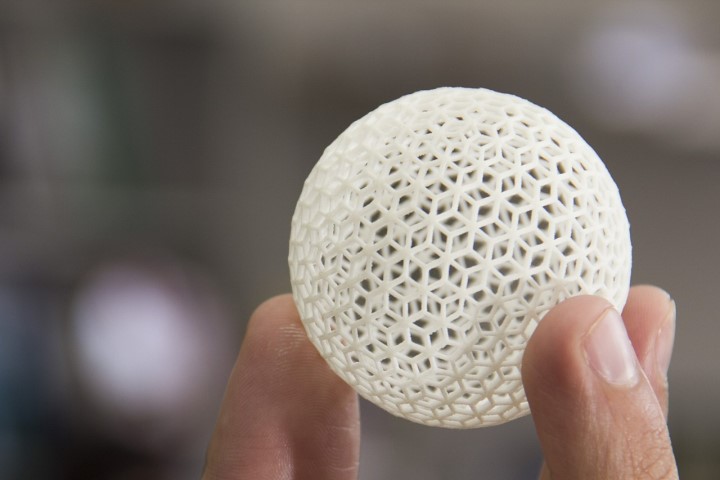Health Sciences
Eco-Friendly Flower Delivery: Sustainable Choices for a Greener World
In this light, let’s explore the world of sustainable anniversary flower delivery, showcasing how these eco-friendly choices not only delight your friends, relatives, and loved ones but also help promote a greener and more sustainable world.

In the age of rising environmental consciousness, every aspect of our daily lives is being reevaluated, refashioned, and realigned with the global sustainability goal. One such area which has recently experienced a green revolution is the world of flower delivery. It’s now more important than ever to make conscious decisions that minimize our environmental impact. In this light, let’s explore the world of sustainable anniversary flower delivery, showcasing how these eco-friendly choices not only delight your friends, relatives, and loved ones but also help promote a greener and more sustainable world.
Table of Contents
1. The Power of Local and Seasonal Blooms
In our collective pursuit of reducing our carbon footprint, every choice matters, and it is within this context that the selection of locally grown flowers for delivery becomes not just a preference, but a responsibility. The journey of a flower, from seed to blossom, can span continents, with many blooms traveling thousands of miles before reaching the recipient. It’s a journey that, while miraculous, can be fraught with ecological implications due to the significant carbon emissions associated with long-distance transportation.
By choosing locally grown flowers, we significantly truncate this journey, thereby reducing these emissions. Our communities are rich with local flower farms that serve as a testament to nature’s bounty. They offer a wide array of vibrant, seasonal flowers, each of which carries the scent and soul of its local terrain. These locally-sourced blooms not only bring joy to any recipient but also provide a critical lifeline to local businesses, fostering community ties and helping to build a more resilient local economy.
Choosing seasonal flowers adds another dimension to this sustainability narrative. Nature, in its infinite wisdom, has designed each flower to bloom in its season. These seasonal rhythms ensure that each flower grows in optimal conditions, enhancing its vibrancy and longevity. Furthermore, seasonal flowers, grown and harvested within their natural growing period, require fewer resources and interventions, making them a more sustainable choice.
The beauty of seasonal flowers is more than just visual; it’s a reflection of our local landscapes’ changing beauty. Each bloom tells a story of the season, reminding us of the cyclical rhythms of nature, from the rejuvenating blossoms of spring to the rich, warm hues of autumn. As we gift these flowers, we share a piece of our local world, introducing our loved ones to the rhythms that govern our natural environment.
2. Organic Flowers: Blooming in Harmony with Nature
The organic revolution initially sparked in the food industry, has found its way to the fields of flowers. Indeed, if we’ve started to question what goes into our bodies, it’s only logical that we extend this same concern to what we bring into our homes. Organic flowers, grown without the use of synthetic pesticides and chemicals, present a compelling answer to this question.
The cultivation of organic flowers is a testament to a harmonious balance with nature. These blooms grow as nature intended, devoid of any artificial interventions that might disrupt the ecosystem. This process of organic farming not only helps to preserve the fragile equilibrium of our planet’s biodiversity but also contributes to soil health, enriching it with nutrients and promoting a sustainable farming ecosystem.
Furthermore, organic flowers are also about social responsibility. Conventional flower farming often involves the use of chemicals that can be hazardous for the workers who are growing, harvesting, and handling the flowers. Organic farming removes these potential hazards, creating safer work environments and protecting the health and well-being of these workers.
When we choose organic flowers for our floral deliveries, we are making a conscious decision to care for our planet and the people on it. Each organic bloom stands as a symbol of our commitment to the environment, and to the farmers who have chosen the path of sustainability over convenience.
Moreover, organic flower arrangements offer a unique aesthetic appeal – an earthy, natural beauty that resonates with the growing desire for authenticity and sustainability. These bouquets, brimming with blooms that have been nurtured without harmful chemicals, bring a certain peace and tranquility to any setting, subtly reminding us of our connection with nature.
3. Upcycled and Recycled: Packaging for the Planet
Imagine a beautiful bouquet, with vibrant, lush blooms, emitting a gentle fragrance. Now imagine it wrapped in excessive, non-recyclable materials. The image is not quite as charming, is it? It’s the stark contrast between the natural beauty of the flowers and the synthetic wastefulness of their packaging that forms a jarring image. That’s where upcycled or recycled materials for flower packaging step in, presenting a solution that aligns with our quest for sustainability without compromising on aesthetics.
Upcycled packaging refers to the innovative process of transforming waste or unwanted products into new materials or products of better quality or environmental value. For instance, discarded fabric or newspapers can be creatively turned into unique, eco-friendly wrapping for flower bouquets. On the other hand, recycled materials, such as recycled paper, can serve as an earth-friendly substitute for traditional wrapping paper, reducing the demand for virgin resources and the consequential strain on our forests.
One of the cornerstones of sustainable living is the principle of ‘waste not, want not.’ Biodegradable packaging materials are the embodiment of this principle. Unlike conventional packaging that can take centuries to decompose, biodegradable materials break down and return to the earth without leaving toxic residues, reducing pollution and helping to maintain the balance of our ecosystems.
Packaging also provides an opportunity to introduce reusable items, such as reusable vases or pots. Not only do these containers serve as a lasting memento of your thoughtful gift, but they also continue to serve a purpose long after the flowers have bloomed. Every time the recipient reuses the vase, they are reminded of your gift and the importance of reusing items to reduce waste.
The concept of circular economy is rooted in the idea of keeping resources in use for as long as possible, extracting the maximum value from them whilst in use, and then recovering and regenerating products and materials at the end of their service life. When we opt for upcycled, recycled, or biodegradable packaging for our flower delivery, we become active participants in this circular economy.
4. A Greener Tomorrow with Every Bouquet
Sustainable flower delivery stands as an emblem of love and care, both for our dear ones and for the planet. Each eco-friendly bouquet embodies a conscious decision to protect our environment. By choosing locally grown, organic flowers and opting for sustainable packaging practices, we can celebrate life’s precious moments without the shadow of ecological guilt.
Embrace these eco-friendly choices in flower delivery and be part of the global movement toward a more sustainable future. After all, it’s in our hands to ensure that the beauty of flowers and the vibrancy of nature can be enjoyed by generations to come. Let our flowers not only express our affection but also our commitment to a greener and more sustainable world.
Health & Fitness
The Future of HR Technology in Health Services

As we navigate the currents of digital transformation, the health services sector stands at the precipice of a major shift in Human Resources (HR) technology. With an industry characterized by continuous innovation and high stakes, the future of HR technology in health services promises not only to streamline administrative tasks but also to revolutionize employee experience and patient care. Let’s embark on an exploration of what the future holds for HR technology in the health services sector, combining professional insights with a dash of playful foresight.
Table of Contents
1. Integration Overload to Streamlined Systems
The current landscape of HR technology is often criticized for its fragmented nature, with multiple systems handling different aspects of HR tasks. The future lies in the development of more integrated systems, offering a cohesive user experience. This will not only reduce the administrative burden on healthcare professionals but also provide a unified source of truth for HR data.
2. Prioritizing Employee Wellness
As the frontline warriors in patient care, healthcare professionals’ wellness is paramount. Future HR technologies will offer more sophisticated tools for monitoring and enhancing employee wellness. From stress management programs integrated into HR platforms to real-time health monitoring wearables, these technologies will bring a proactive approach to handling workplace stress and fatigue.
Adopting advanced technological solutions, such as HCM payroll software, can streamline complex payroll operations, ensuring health services organizations manage their workforce effectively. This is crucial for maintaining operational efficiency and allows HR professionals to focus on strategic initiatives that enhance employee satisfaction and patient care.
3. Embracing the Gig Economy
The rise of the gig economy presents another layer of complexity and opportunity in the HR landscape of health services. HR technologies will need to adapt to accommodate the growing number of freelance and part-time healthcare professionals, enabling flexible work arrangements while ensuring compliance and maintaining quality of care.
4. Global Talent Networks
The global nature of health challenges necessitates a more connected and international workforce. HR technology will play a crucial role in facilitating global talent pools, allowing healthcare organizations to source and manage talent from around the world more effectively. This will not only help in addressing local shortages but also in enriching the diversity and expertise of healthcare teams.

5. Personalization at Scale
The mantra of personalized care in health services is extending into the realm of HR technology. Imagine HR systems that not only understand the professional profiles of their employees but also their personal needs and preferences. This could mean adaptive learning platforms for continuous professional development, tailoring educational content to the unique learning pace and style of each healthcare professional.
6. Fostering a Culture of Continuous Learning
The accelerating pace of technological advancement in health services demands a workforce that is continually learning and adapting. The future of HR technology will emphasize support for continuous education and upskilling, making it easier for healthcare professionals to stay ahead of the curve, thereby ensuring the highest standards of patient care in an ever-evolving landscape.
7. Data-Driven Decision Making
In the age of big data, HR technologies are not left behind. Advanced analytics and predictive modeling will become staple features, empowering HR professionals in health services to make informed decisions about workforce management, talent acquisition, and employee engagement strategies. This precision will lead to a healthier workplace environment and improved patient care outcomes.
8. The Rise of AI and Automation
Artificial Intelligence (AI) and automation are set to redefine the everyday tasks of HR departments in health services. From automating routine tasks such as payroll and scheduling to leveraging AI for better talent management and recruitment processes, these technologies promise to free up HR professionals to focus more on strategic initiatives and employee engagement.
9. Securing Sensitive Data
With great power comes great responsibility, particularly when it comes to handling sensitive information. As HR technologies evolve, so too will the capabilities for securing employee data. We can expect advancements in encryption, blockchain technology for verifying credentials and training records, and more robust compliance tools to address the growing web of regulatory requirements in health services.
Conclusion
The future of HR technology in health services is bright, filled with the promise of streamlined operations, enriched employee experiences, and ultimately, superior patient care. As we look towards this future, it’s clear that the intersection of technology and human empathy will continue to drive innovation in health services HR. The path forward is not without challenges, including ensuring data privacy and navigating the complexities of digital transformation. However, the potential for transformative change is immense, promising a new era of efficiency and engagement in health services.
-

 Instagram4 years ago
Instagram4 years agoBuy IG likes and buy organic Instagram followers: where to buy them and how?
-

 Instagram4 years ago
Instagram4 years ago100% Genuine Instagram Followers & Likes with Guaranteed Tool
-

 Business5 years ago
Business5 years ago7 Must Have Digital Marketing Tools For Your Small Businesses
-

 Instagram4 years ago
Instagram4 years agoInstagram Followers And Likes – Online Social Media Platform
















